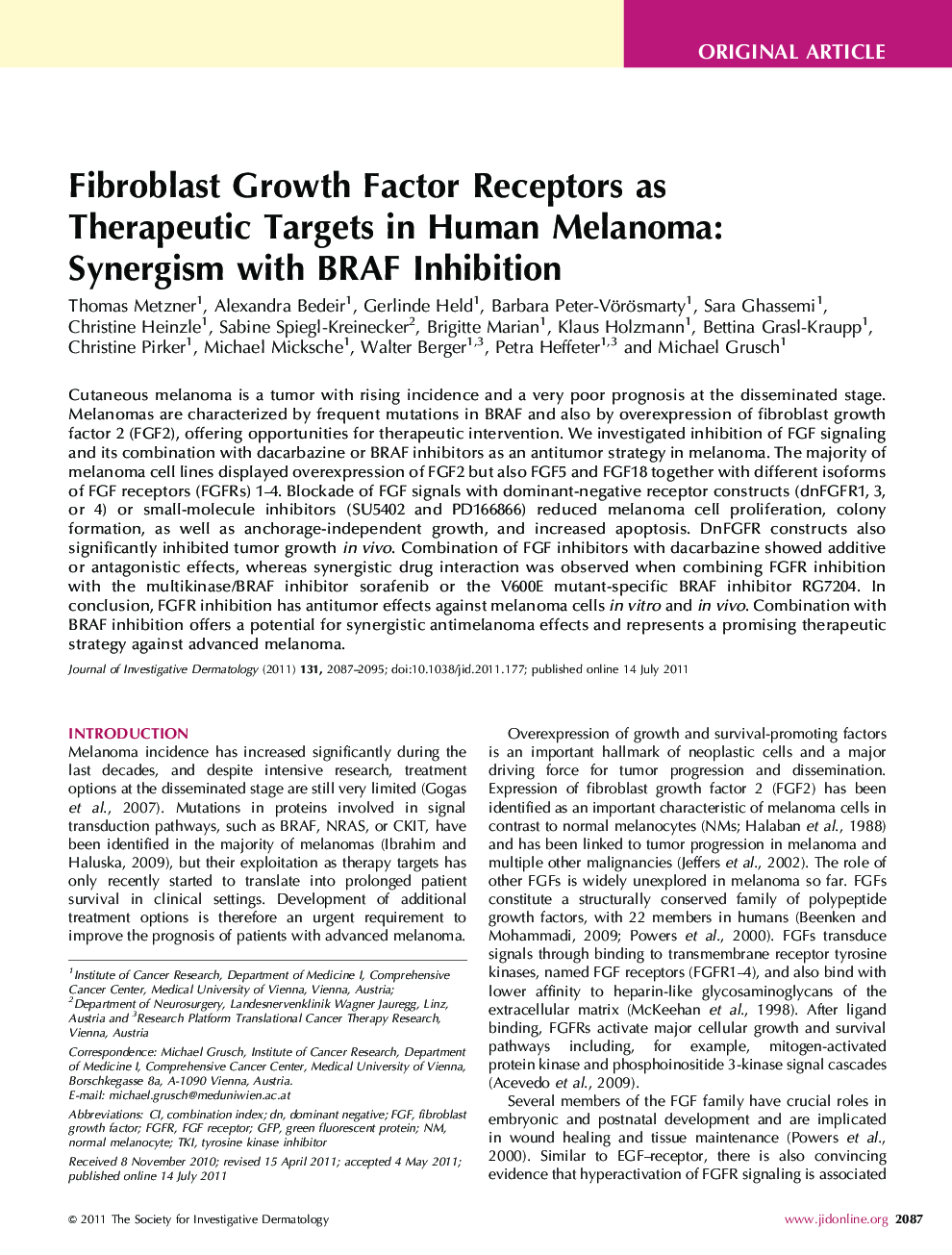| Article ID | Journal | Published Year | Pages | File Type |
|---|---|---|---|---|
| 6077299 | Journal of Investigative Dermatology | 2011 | 9 Pages |
Abstract
Cutaneous melanoma is a tumor with rising incidence and a very poor prognosis at the disseminated stage. Melanomas are characterized by frequent mutations in BRAF and also by overexpression of fibroblast growth factor 2 (FGF2), offering opportunities for therapeutic intervention. We investigated inhibition of FGF signaling and its combination with dacarbazine or BRAF inhibitors as an antitumor strategy in melanoma. The majority of melanoma cell lines displayed overexpression of FGF2 but also FGF5 and FGF18 together with different isoforms of FGF receptors (FGFRs) 1-4. Blockade of FGF signals with dominant-negative receptor constructs (dnFGFR1, 3, or 4) or small-molecule inhibitors (SU5402 and PD166866) reduced melanoma cell proliferation, colony formation, as well as anchorage-independent growth, and increased apoptosis. DnFGFR constructs also significantly inhibited tumor growth in vivo. Combination of FGF inhibitors with dacarbazine showed additive or antagonistic effects, whereas synergistic drug interaction was observed when combining FGFR inhibition with the multikinase/BRAF inhibitor sorafenib or the V600E mutant-specific BRAF inhibitor RG7204. In conclusion, FGFR inhibition has antitumor effects against melanoma cells in vitro and in vivo. Combination with BRAF inhibition offers a potential for synergistic antimelanoma effects and represents a promising therapeutic strategy against advanced melanoma.
Related Topics
Health Sciences
Medicine and Dentistry
Dermatology
Authors
Thomas Metzner, Alexandra Bedeir, Gerlinde Held, Barbara Peter-Vörösmarty, Sara Ghassemi, Christine Heinzle, Sabine Spiegl-Kreinecker, Brigitte Marian, Klaus Holzmann, Bettina Grasl-Kraupp, Christine Pirker, Michael Micksche, Walter Berger,
